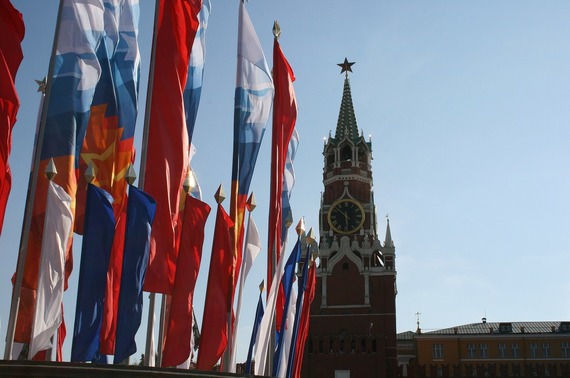Image: Kremlin. Stock Photo. Pixabay.com
Constitutions are supposed to be the ultimate guarantor of citizens' rights, but cunning leaders in the former Soviet Union often manipulate them for their own ends, not the people's.
The most egregious manipulation of the constitutional-revision process is changing the document to allow a leader to stay in office longer, so he has more time to feed at the public trough.
Take the Russian Constitution, for example.
The document, which was created in the early 1990s after the collapse of the Soviet Union, hasn't been amended a lot.
But the practical effect of one of those revisions -- in 2008 -- was to extend Vladimir Putin's rule for four years.
When Putin was elected president in 2000, the constitution in effect at the time limited him to two consecutive four-year terms as the nation's leader.
He got around the limit by having his political compatriot Dmitry Medvedev run for president in 2008, with Putin continuing to run Russia as the power behind the throne.
When 2012 rolled around, Putin ran for president again. That was allowed under the constitution because there was a break between his first two terms and the third.
Before he ran, however, he got Parliament to change the constitution so he could serve two new six-year terms as president rather than two new four-year terms.
If he runs for president again in 2018, he will have been in the highest office 20 years and run the country for four years as the power behind the throne -- a total of 24 years as ruler. That's a dictatorship in anybody's book.
Turkmenistan's leader, Gurbanguly Berdymukhamedov, also increased his power in 2008 by pushing constitutional revisions through Parliament.
A key provision in the 2008 change restored the president's power to appoint regional governors and mayors -- an important tool for preventing an opposition movement from developing outside the capital of Ashgabat. A previous constitutional change, in 2005, had shifted the power to appoint governors and mayors from the president to regional officials.
But the most obvious recent example of a regional leader's manipulation of the constitutional-revision process to cement his power is Armenia.
In December of 2015, the government announced that two-thirds of Armenian voters had approved the constitutional-change referendum that President Serzh Sargsyan's Republican Party had drawn up.
Opponents of the change had contended that its only purpose was to prolong Sargsyan's rule. And, they screamed, the government had stolen the vote.
The main thrust of the constitutional revision was changing Armenia's political model from a strong-president system to a parliamentary system.
The previous constitution limited a president to two five-year terms. That meant that Sargsyan, who was elected in 2008, would have to give up ruling the country in 2018.
The shift to a parliamentary system allows him to continue being the supreme ruler -- only this time as prime minister instead of president.
The constitutional revision shifts the power between the president and prime minister. Under the old system, the president had the power and the prime minister was a figurehead. Now the reverse is true.
Thousands of Armenians, who recognized that the constitutional revision would be tantamount to anointing Sargsyan as Armenia's ruler for life, demonstrated against the vote. They said it was sure to be as fraudulent as the 2013 vote in which Sargsyan was re-elected as president. The 2013 election also spawned fraudulent-vote street protests.
There were many signs that opponents of the constitutional-change referendum were right about the vote being manipulated.
Election officials reported that in a number of precincts not even one vote was cast against the revision proposal.
"One doesn't know whether to laugh or cry," revision opponent Karena Avedissian tweeted.
In one case, non-government voter-registration monitors found a voter on the rolls whose birth year was listed as 1895. That would have made him 120 -- the world's oldest person by far. The Compass Research Center also discovered that three in 10 of the addresses of voters listed on the rolls in Gyumri, Armenia's second-largest city, didn't exist.
And the center found 845 more voter names in one precinct than there were voting-age residents.
The government hailed the adoption of the constitutional change, saying it would bring "stability" to the political system.
Opponents noted sarcastically that it would certainly bring stability to Sargsyan's luxurious lifestyle, since he could continue using the power of his office to enrich himself.
In democracies, constitutional changes are often designed to empower citizens. An example is the U.S. amendment in 1919 that gave women the right to vote.
In the former Soviet Union, however, the mantra for constitutional change should be "buyer beware." That's because, in many cases, those who get the additional power are not the rank and file -- who need it -- but the fat cats who are already on top.
Armine Sahakyan is a human rights activist based in Armenia. A columnist with the Kyiv Post and a blogger with The Huffington Post, she writes on human rights and democracy in Russia and the former Soviet Union. Follow her on Twitter at: www.twitter.com/ArmineSahakyann

